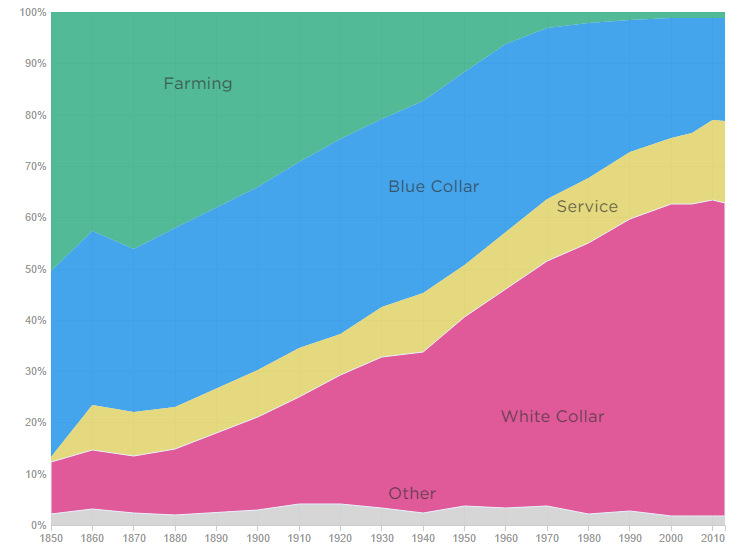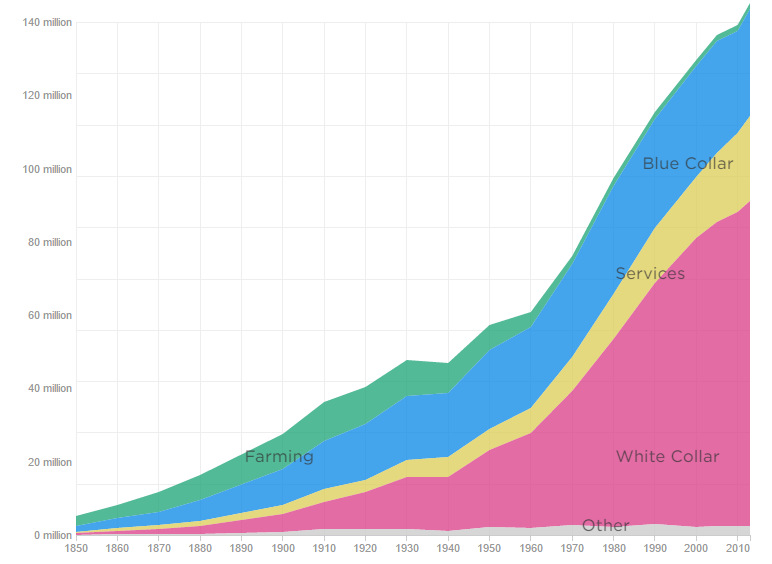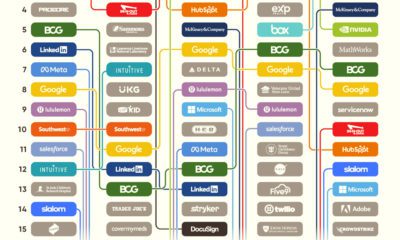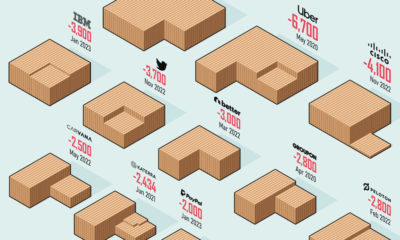At first glance, this would be a ridiculous thing to say. Of course there aren’t many blacksmiths around. We live in a modern society and machines do a way better job of making things from metal anyways. However, it also raises an important point. What if machines are better at driving long-haul trucks? What if machines are better servers at McDonald’s? What if robots did your taxes for you? While some of these ideas are contentious today, in the future we may look back thinking that our fears were ill-placed. The truth is that the job landscape is constantly in flux as technology changes. Some of today’s jobs with high automation potential may be the future “blacksmiths”, and we should not be surprised if they go away. The best thing that we can do is to understand these trends and build a set of skills that will be in demand in any market.
The Trend is Your Friend
The following graphics from NPR shows the evolution of jobs over time in the United States. The first divides jobs into four main categories: white collar, blue collar, farming, and services. It shows how the composition of the overall job market has changed over the last 165 years:
The second shows the same information, but plotted by the total number of jobs:
There were 10 million farmers in America in the early 20th century. Now there’s closer to one million, and yet those farmers produce way more food. Technology may have “killed off” the majority of farm jobs, but at the same time new technology created jobs in the service, blue collar, and white collar industries. We may now be at a similar inflection point for other careers – this interactive graphic shows some of the jobs that have been on the decline in recent years.
In 1960, a whopping 11% of the workforce was employed in factories. Today only 4% are employed in factories. In the late 1970s, almost 5% of the workforce was secretaries. Today, we’re at about half that, but professionals can be just as productive without a secretary thanks to better computer software. Yes, there are globalization issues at play here as well, but even a modern domestic factory such as the Tesla Gigafactory (which has the largest building by footprint in the world) will only employ about 6,000 people. The majority of the work will be done by robots. And while it seems scary to think about the rise of machines and a faster pace of technological advancement, it’s important to recognize that these types of sweeping changes to the job market have happened throughout history. The point is, try not to be the 21st century version of a “blacksmith”. on But fast forward to the end of last week, and SVB was shuttered by regulators after a panic-induced bank run. So, how exactly did this happen? We dig in below.
Road to a Bank Run
SVB and its customers generally thrived during the low interest rate era, but as rates rose, SVB found itself more exposed to risk than a typical bank. Even so, at the end of 2022, the bank’s balance sheet showed no cause for alarm.
As well, the bank was viewed positively in a number of places. Most Wall Street analyst ratings were overwhelmingly positive on the bank’s stock, and Forbes had just added the bank to its Financial All-Stars list. Outward signs of trouble emerged on Wednesday, March 8th, when SVB surprised investors with news that the bank needed to raise more than $2 billion to shore up its balance sheet. The reaction from prominent venture capitalists was not positive, with Coatue Management, Union Square Ventures, and Peter Thiel’s Founders Fund moving to limit exposure to the 40-year-old bank. The influence of these firms is believed to have added fuel to the fire, and a bank run ensued. Also influencing decision making was the fact that SVB had the highest percentage of uninsured domestic deposits of all big banks. These totaled nearly $152 billion, or about 97% of all deposits. By the end of the day, customers had tried to withdraw $42 billion in deposits.
What Triggered the SVB Collapse?
While the collapse of SVB took place over the course of 44 hours, its roots trace back to the early pandemic years. In 2021, U.S. venture capital-backed companies raised a record $330 billion—double the amount seen in 2020. At the time, interest rates were at rock-bottom levels to help buoy the economy. Matt Levine sums up the situation well: “When interest rates are low everywhere, a dollar in 20 years is about as good as a dollar today, so a startup whose business model is “we will lose money for a decade building artificial intelligence, and then rake in lots of money in the far future” sounds pretty good. When interest rates are higher, a dollar today is better than a dollar tomorrow, so investors want cash flows. When interest rates were low for a long time, and suddenly become high, all the money that was rushing to your customers is suddenly cut off.” Source: Pitchbook Why is this important? During this time, SVB received billions of dollars from these venture-backed clients. In one year alone, their deposits increased 100%. They took these funds and invested them in longer-term bonds. As a result, this created a dangerous trap as the company expected rates would remain low. During this time, SVB invested in bonds at the top of the market. As interest rates rose higher and bond prices declined, SVB started taking major losses on their long-term bond holdings.
Losses Fueling a Liquidity Crunch
When SVB reported its fourth quarter results in early 2023, Moody’s Investor Service, a credit rating agency took notice. In early March, it said that SVB was at high risk for a downgrade due to its significant unrealized losses. In response, SVB looked to sell $2 billion of its investments at a loss to help boost liquidity for its struggling balance sheet. Soon, more hedge funds and venture investors realized SVB could be on thin ice. Depositors withdrew funds in droves, spurring a liquidity squeeze and prompting California regulators and the FDIC to step in and shut down the bank.
What Happens Now?
While much of SVB’s activity was focused on the tech sector, the bank’s shocking collapse has rattled a financial sector that is already on edge.
The four biggest U.S. banks lost a combined $52 billion the day before the SVB collapse. On Friday, other banking stocks saw double-digit drops, including Signature Bank (-23%), First Republic (-15%), and Silvergate Capital (-11%).
Source: Morningstar Direct. *Represents March 9 data, trading halted on March 10.
When the dust settles, it’s hard to predict the ripple effects that will emerge from this dramatic event. For investors, the Secretary of the Treasury Janet Yellen announced confidence in the banking system remaining resilient, noting that regulators have the proper tools in response to the issue.
But others have seen trouble brewing as far back as 2020 (or earlier) when commercial banking assets were skyrocketing and banks were buying bonds when rates were low.


















